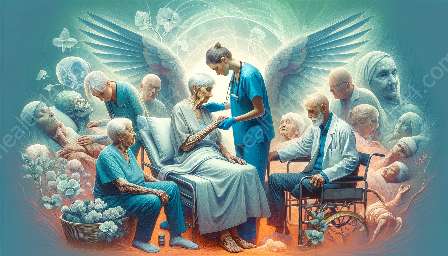As individuals age, saliva undergoes changes that can significantly impact oral health. In this discussion, we will delve into the implications of age-related changes in saliva and their relevance in the context of geriatric dentistry and geriatrics. Understanding these implications is crucial for providing comprehensive oral care to the elderly population.
Age-Related Changes in Saliva
The composition and function of saliva can be altered with age. Reduced salivary flow and changes in salivary pH, consistency, and buffering capacity are common age-related changes. These alterations can lead to an increased susceptibility to oral diseases and affect overall oral health.
Implications for Oral Health
The implications of age-related changes in saliva for oral health are multifaceted. Firstly, decreased salivary flow can result in dry mouth, also known as xerostomia. This condition can lead to discomfort, difficulties in speaking and swallowing, and an increased risk of oral infections and tooth decay.
Moreover, changes in salivary pH and buffering capacity may disrupt the oral microbiome, contributing to an imbalance in oral flora and an elevated risk of periodontal diseases. Additionally, reduced saliva can impair the remineralization of tooth enamel, potentially leading to an increased incidence of dental caries in older individuals.
Relevance in Geriatric Dentistry
Geriatric dentistry emphasizes the oral health care of elderly patients. Understanding the implications of age-related changes in saliva is essential for geriatric dentists. It guides the development of targeted preventive strategies and treatment approaches to address the specific challenges faced by older individuals with regard to oral health.
Moreover, geriatric dentistry encompasses the management of age-related conditions such as dry mouth and the associated oral manifestations. Proper recognition and management of these implications are vital in providing comprehensive and tailored care to elderly dental patients.
Connection to Geriatrics
In the field of geriatrics, oral health is recognized as a crucial aspect of overall well-being. The implications of age-related changes in saliva are interconnected with geriatrics as they can have wider systemic effects beyond oral health. For instance, the oral manifestations of dry mouth can impact nutrition and medication adherence in older individuals, potentially affecting their overall health and quality of life.
Furthermore, understanding the implications of age-related changes in saliva aligns with the holistic approach of geriatrics, emphasizing the importance of integrated and patient-centered care. Comprehensive geriatric assessments should include oral health evaluations to address the implications of age-related changes in saliva and their impact on the overall well-being of elderly individuals.
Interventions and Management
Given the implications of age-related changes in saliva, interventions and management strategies are crucial. In geriatric dentistry, personalized oral care plans tailored to the specific needs of older patients are essential. These plans may include the use of saliva substitutes, maintenance of oral hygiene, and regular dental check-ups to mitigate the effects of age-related changes in saliva.
Furthermore, interdisciplinary collaboration between geriatric dentists, physicians, and other healthcare professionals is vital in addressing the broader implications of age-related changes in saliva. This collaboration can contribute to a comprehensive management approach that considers the systemic effects of oral health on the overall well-being of geriatric patients.
Conclusion
In conclusion, the implications of age-related changes in saliva for oral health are substantial, particularly in the context of geriatric dentistry and geriatrics. Recognizing these implications is crucial for providing effective and holistic care to the elderly population. By understanding the impact of age-related changes in saliva, healthcare professionals can develop targeted interventions to maintain and improve the oral health and overall well-being of older individuals.


